![實驗設計和分析 [Design and Analysis of Experiments]](https://pic.tinynews.org/10184608/862ddf12-8aa8-4c9e-b330-528ac96f0b55.jpg)

具体描述
內容簡介
Principles and Techniques、Design: Basic Principles and Techniques、The Art of Experimentation、Replication、Blocking、Randomization、Analysis: Basic Principles and Techniques、Planning Experiments、A Checklist for Planning Experiments、Real Experiment——Cotton-Spinning Experiment等等。內頁插圖
目錄
Preface1. Principles and Techniques
1.1. Design: Basic Principles and Techniques
1.1.1. The Art of Experimentation
1.1.2. Replication
1.1.3. Blocking
1.1.4. Randomization
1.2. Analysis: Basic Principles and Techniques
2. Planning Experiments
2.1. Introduction
2.2. A Checklist for Planning Experiments
2.3. A Real Experiment——Cotton-Spinning Experiment
2.4. Some Standard Experimental Designs
2.4.1. Completely Randomized Designs
2.4.2. Block Designs
2.4.3. Designs with Two or More Blocking Factors
2.4.4. Split-Plot Designs
2.5. More Real Experiments
2.5.1. Soap Experiment
2.5.2. Battery Experiment
2.5.3. Cake-Baking Experiment
Exercises
3. Designs with One Source of Variation
3.1. Introduction
3.2. Randomization
3.3. Model for a Completely Randomized Design
3.4. Estimation of Parameters
3.4.1. Estimable Functions of Parameters
3.4.2. Notation
3.4.3. Obtaining Least Squares Estimates
3.4.4. Properties of Least Squares Estimators
3.4.5. Estimation ofo2
3.4.6. Confidence Bound for ~r2
3.5. One-Way Analysis of Variance
3.5.1. Testing Equality of Treatment Effects
3.5.2. Use of p-Values
3.6. Sample Sizes
3.6.1. Expected Mean Squares for Treatments
3.6.2. Sample Sizes Using Power of a Test
3.7. A Real Experiment——-Soap Experiment, Continued
3.7.1. Checklist, Continued
3.7.2. Data Collection and Analysis
3.7.3. Discussion by the Experimenter
3.7.4. Further Observations by the Experimenter
3.8. Using SAS Software
3.8.1. Randomization
3.8.2. Analysis of Variance
Exercises
4. Inferences for Contrasts and Treatment Means
4.1. Introduction
4.2. Contrasts
4.2.1. Pairwise Comparisons
4.2.2. Treatment Versus Control
4.2.3. Difference of Averages
4.2.4. Trends
4.3. Individual Contrasts and Treatment Means
4.3.1. Confidence Interval for a Single Contrast
4.3.2. Confidence Interval for a Single Treatment Mean
4.3.3. Hypothesis Test for a Single Contrast or Treatment Mean
4.4. Methods of Multiple Comparisons
4.4.1. Multiple Confidence Intervals
4.4.2. Bonferroni Method for Preplanned Comparisons
4.4.3. Scheff6 Method of Multiple Comparisons
4.4.4. Tukey Method for All Pairwise Comparisons
4.4.5. Dunnett Method for Treatment-Versus-Control Comparisons
4.4.6. Hsu Method for Multiple Comparisons with the Best
reatment
4.4.7. Combination of Methods
4.4.8. Methods Not Controlling Experimentwise Error Rate
4.5. Sample Sizes
4.6. Using SAS Software
4.6.1. Inferences on Individual Contrasts
4.6.2. Multiple Comparisons
Exercises
5. Checking Model Assumptions
5.1. Introduction
5.2. Strategy for Checking Model Assumptions
5.2.1. Residuals
5.2.2. Residual Plots
5.3. Checking the Fit of the Model
5.4. Checking for Outliers
5.5. Checking Independence of the Error Terms
5.6. Checking the Equal Variance Assumption
5.6.1. Detection of Unequal Variances
5.6.2. Data Transformations to Equalize Variances
5.6.3. Analysis with Unequal Error Variances
5.7. Checking the Normality Assumption
5.8. Using SAS Software
5.8.1. Using SAS to Generate Residual Plots
5.8.2. Transforming the Data
Exercises
6. Experiments with Two Crossed Treatment Factors
6.1. Introduction
6.2. Models and Factorial Effects
6.2.1. The Meaning of Interaction
6.2.2. Models for Two Treatment Factors
6.2.3. Checking the Assumptions on the Model
6.3. Contrasts
6.3.1. Contrasts for Main Effects and Interactions
6.3.2. Writing Contrasts as Coefficient Lists
6.4. Analysis of the Two-Way Complete Model
6.4.1. Least Squares Estimators for the Two-Way Complete Model
6.4.2. Estimation ofo~ for the Two-Way Complete Model
6.4.3. Multiple Comparisons for the Complete Model
6.4.4. Analysis of Variance for the Complete Model
6.5. Analysis of the Two-Way Main-Effects Model
6.5.1. Least Squares Estimators for the Main-Effects Model
6.5.2. Estimation ofa2 in the Main-Effects Model
6.5.3. Multiple Comparisons for the Main-Effects Model
6.5.4. Unequal Variances
6.5.5. Analysis of Variance for Equal Sample Sizes
6.5.6. Model Building
6.6. Calculating Sample Sizes
6.7. Small Experiments
6.7.1. One Observation per Cell
6.7.2. Analysis Based on Orthogonal Contrasts
6.7.3. Tukeys Test for Additivity
6.7.4. A Real Experiment——Air Velocity Experiment
6.8. Using SAS Software
6.8.1. Contrasts and Multiple Comparisons
6.8.2. Plots
6.8.3. One Observation per Cell
Exercises
7. Several Crossed Treatment Factors
7.1. Introduction
7.2. Models and Factorial Effects
7.2.1. Models
7.2.2. The Meaning of Interaction
7.2.3. Separability of Factorial Effects
7.2.4. Estimation of Factorial Contrasts
7.3. Analysis——Equal Sample Sizes
7.4. A Real Experiment——Popcorn-Microwave Experiment
7.5. One Observation per Cell
7.5.1. Analysis Assuming That Certain Interaction Effects Are egligible
7.5.2. Analysis Using Normal Probability Plot of Effect Estimates
7.5.3. Analysis Using Confidence Intervals
7.6. Design for the Control of Noise Variability
7.6.1. Analysis of Design-by-Noise Interactions
7.6.2. Analyzing the Effects of Design Factors on Variability .
7.7. Using SAS Software
7.7.1. Normal Probability Plots of Contrast Estimates
7.7.2. Voss-Wang Confidence Interval Method
7.7.3. Identification of Robust Factor Settings
7.7.4. Experiments with Empty Cells
Exercises
8. Polynomial Regression
8.1. Introduction
8.2. Models
8.3. Least Squares Estimation (Optional)
8.3.1. Normal Equations
……
9. Analysis of Covariance
10. Complete Block Designs
11. Incomplete Block Designs
12. Designs with Two Blocking Factors
13. Confounded Two-Level Factorial Experiments
14. Confounding in General Factorial Experiments
15. Fractional Factorial Experiments
16. esponse Surface Methodology
17. andom Effects and Variance Components
18. estde Models
19. plit-Plot Designs
A. ables
Bibliography
Index of Authors
Index of Experiments
Index of Subjects
精彩書摘
In the analysis of data, it is desirable to provide both graphical and statistical analyses. Plotsthat illustrate the relative responses of the factor settings under study allow the experimenterto gain a feel for the practical implications of the statistical results and to communicateeffectively the results of the experiment to others. In addition, data plots allow the proposedmodel to be checked and aid in the identification of unusual observations, as discussed inChapter 5. Statistical analysis quantifies the relative responses of the factors, thus clarifyingconclusions that might be misleading or not at all apparent in plots of the data.The purpose of an experiment can range from exploratory (discovering new importantsources of variability) to confirmatory (confirming that previously discovered sources ofvariability are sufficiently major to warrant further study), and the philosophy of the analysisdepends on the purpose of the experiment. In the early stages of experimentation the analysismay be exploratory, and one would plot and analyze the data in any way that assists in theidentification of important sources of variation. In later stages of experimentation, analysisis usually confirmatory in nature. A mathematical model of the response is postulated andhypotheses are tested and confidence intervals are calculated. In this book, we use linear models to model our response and the methodofleast squaresfor obtaining estimates of the parameters in the model. These are described in Chapter 3.Our models include random "error variables" that encompass all the sources of variabilitynot explicity present in the model. We operate under the assumption that the error termsare normally distributed. However, most of the procedures in this book are generally fairlyrobust to nonnormality, provided that there are no extreme observations among the data. It is rare nowadays for experimental data to be analyzed by hand. Most experimentersand statisticians have access to a computer package that is capable of producing, at the veryleast, a basic analysis of data for the simplest experiments. To the extent possible, for eachdesign discussed, we shall present useful plots and methods of analysis that can be obtainedfrom most statistical software packages. We will also develop many of the mathematicalformulas that lie behind the computer analysis. This will enable the reader more easilyto appreciate and interpret statistical computer package output and the associated manuals.Computer packages vary in sophistication, flexibility, and the statistical knowledge requiredof the user. The SAS software is one of the better packages for analyzing experimental data.It can handle every model discussed in this book, and although it requires some knowledgeof experimental design on the part of the user, it is easy to learn. We provide some basicSAS statements and output at the end of most chapters to illustrate data analysis.
前言/序言
Our initial motivation for writing this book was the observation from various students thatthe subject of design and analysis of experiments can seem like "a bunch of miscellaneoustopics." We believe that the identification of the objectives of the experiment and the practicalconsiderations governing the design form the heart of the subject matter and serve as thelink between the various analytical techniques. We also believe that learning about designand analysis of experiments is best achieved by the planning, running, and analyzing of asimple experiment.With these considerations in mind, we have included throughout the book the detailsof the planning stage of several experiments that were run in the course of teaching ourclasses. The experiments were run by students in statistics and the applied sciences and aresufficiently simple that it is possible to discuss the planning of the entire experiment in afew pages, and the procedures can be reproduced by readers of the book. In each of theseexperiments, we had access to the investigators actual report, including the difficultiesthey came across and how they decided on the treatment factors, the needed number ofobservations, and the layout of the design. In the later chapters, we have included detailsof a number of published experiments. The outlines of many other student and publishedexperiments appear as exercises at the ends of the chapters. omplementing the practical aspects of the design are the statistical aspects of the anal-ysis. We have developed the theory of estimable functions and analysis of variance withsome care, but at a low mathematical level. Formulae are provided for almost all analyses sothat the statistical methods can be well understood, related design issues can be discussed,and computations can be done by hand in order to check computer output.
We recommend the use of a sophisticated statistical package in conjunction with thebook. Use of software helps to focus attention on the statistical issues rather than on thecalculation. Our particular preference is for the SAS sof~vare, and we have included theelementary use of this package at the end of most chapters. Many of the SAS program filesand data sets used in the book can be found at www.springer-ny.com. However, the book canequally well be used with any other statistical package. Availability of statistical soRwarehas also helped shape the book in that we can discuss more complicated analyses——theanalysis of unbalanced designs, for example.
用户评价
這是一本我最近纔開始涉獵的書,雖然我隻翻閱瞭其中一部分,但已經對它産生瞭濃厚的興趣。這本書給我的第一印象是它的嚴謹性。作者在介紹各種實驗設計方法時,條理非常清晰,邏輯性很強,似乎每一個步驟的設置都有其深層的理論依據。我尤其喜歡作者在講解一些基礎概念時,會引用一些經典的、易於理解的例子,比如在說明隨機分組的重要性時,他拿齣瞭一個關於藥物療效的簡單實驗,讓我這個初學者也能很快抓住核心要點。而且,書中在講解一些稍顯復雜的統計分析方法時,並沒有直接拋齣公式,而是先循序漸進地介紹其背後的思想,再結閤具體的應用場景進行說明,這極大地降低瞭學習的難度,讓我感到“原來統計學也沒那麼可怕”。我原本對實驗設計隻停留在模糊的概念層麵,但通過這本書,我開始理解瞭如何有目的地去規劃一個實驗,如何通過閤理的樣本量和分組來提高研究的效率和結果的可信度。對於任何想要在科研領域有所建樹的人來說,這本書無疑是一個非常紮實的起點,它不僅僅是知識的傳授,更是一種思維方式的啓迪。我迫不及待地想繼續深入閱讀,去探索更多關於方差分析、迴歸分析等更高級的主題,相信這本書一定會為我打開一扇新的大門。
评分這本《實驗設計和分析》讓我對“如何讓實驗結果更有說服力”有瞭全新的認識。在接觸這本書之前,我總以為實驗就是憑著感覺去設計,然後收集數據,最後得齣結論。但這本書完全顛覆瞭我的認知。它讓我意識到,一個好的實驗設計,其價值甚至可能超越瞭最終的數據分析。作者花費瞭大量的篇幅來講解如何避免各種潛在的偏見,如何設置對照組、隨機化以及重復試驗的重要性。例如,在討論因素效應時,作者通過詳細的圖示和實例,清晰地展示瞭主效應和交互效應是如何影響最終結果的,這讓我對如何分解和理解這些效應有瞭直觀的感受。我特彆欣賞書中對於“統計顯著性”和“實際顯著性”的區分,這在實際應用中非常重要,避免瞭我們僅僅被p值所迷惑。這本書不僅僅是一本工具書,它更像是一本培養嚴謹科學思維的指南。它教會我如何批判性地看待數據,如何設計齣能夠經得起檢驗的實驗。即使是對於那些已經有一定實驗經驗的研究者,我也相信這本書也能帶來新的啓發和思考,幫助他們優化自己的研究設計,從而獲得更可靠、更有價值的研究成果。
评分我一直對如何科學地進行因果推斷感到睏惑,這本書的齣現,可以說為我撥開瞭迷霧。《實驗設計和分析》在講解如何設計實驗以確立因果關係方麵,做得尤為齣色。作者在強調控製混雜因素的重要性時,列舉瞭許多生動的例子,讓我認識到,一個看似簡單的關聯,背後可能隱藏著復雜的混雜變量。書中關於隨機對照試驗(RCT)的詳細介紹,讓我理解瞭為什麼RCT是確定因果關係的金標準,以及如何在實際操作中盡可能地模擬RCT的優點。此外,對於觀察性研究的局限性和分析方法,作者也進行瞭深入的探討,並提供瞭許多規避偏見、提高證據強度的建議。我尤其對書中關於“選擇偏倚”和“信息偏倚”的討論印象深刻,這讓我開始審視自己過往研究中可能存在的不足。這本書不僅教會我如何設計一個嚴謹的實驗,更教會我如何批判性地評估現有的研究證據,從而做齣更明智的決策。對於任何希望深入理解研究方法論,並能獨立進行科學探究的人來說,這本書都是不可或缺的寶藏。
评分這本書給我帶來的最大收獲,是讓我認識到實驗設計中的“經濟性”與“有效性”的平衡。在開始閱讀之前,我總覺得好的實驗設計就意味著要投入大量的資源和時間。但《實驗設計和分析》這本書,通過引入許多高效的設計方法,如析因設計、區組設計等,讓我看到瞭如何在有限的條件下,最大化地獲取有價值的信息。作者在講解這些方法時,不僅僅是羅列公式,而是通過生動的圖錶和實際案例,展示瞭這些設計如何能夠減少實驗次數,提高效率,同時又不犧牲結果的準確性。我特彆喜歡書中關於“最優設計”的討論,它讓我明白,並非越復雜的實驗設計就越好,而是要根據具體的研究目標和資源情況,選擇最適閤的設計。這本書不僅為我提供瞭解決具體實驗設計問題的方案,更重要的是,它培養瞭我一種“用智慧取勝”的理念,讓我能夠更靈活、更經濟地開展科研工作。這本書絕對是一本能夠讓讀者在實踐中受益匪淺的佳作。
评分讀完《實驗設計和分析》的部分章節,我深刻體會到,實驗設計遠不止是收集數據那麼簡單。這本書深入淺齣地闡述瞭科學研究的基石——如何構建一個能夠精確迴答研究問題的實驗框架。作者在講解不同實驗設計模型時,充分考慮到瞭實際研究中可能遇到的各種復雜情況,並給齣瞭相應的解決方案。我特彆贊賞書中對“效應量”的重視,它提醒我們不僅要關注結果是否具有統計學意義,更要關注其在實際應用中的意義。例如,在討論多因素實驗設計時,作者詳細解釋瞭如何通過正交設計和響應麵方法來有效地識彆和優化關鍵因素,這對於産品開發、工藝改進等領域具有極高的應用價值。書中對於數據分析部分的選擇,也恰到好處,既介紹瞭基礎的統計方法,也為更復雜的分析提供瞭鋪墊,讓我對整個實驗流程有瞭宏觀的把握。這本書不僅僅適閤理論研究者,對於工程技術人員、市場研究人員等也同樣具有重要的參考價值。它提供瞭一種係統性的思維方式,幫助我們在麵對問題時,能夠更科學、更有效地進行探索和驗證。
评分喜欢在京东买书就是因为送货快,非常及时
评分喜欢在京东买书就是因为送货快,非常及时
评分收藏先,看起来有点困难,先看了中文的有基础了再看这个
评分很好,很好!非常好的书!
评分英文书籍,闲来读读。。
评分经典的书,经典的教材
评分买书如山倒,读书如抽丝
评分英文原版书,计量必读的
评分收藏先,看起来有点困难,先看了中文的有基础了再看这个
相关图书
本站所有內容均為互聯網搜索引擎提供的公開搜索信息,本站不存儲任何數據與內容,任何內容與數據均與本站無關,如有需要請聯繫相關搜索引擎包括但不限於百度,google,bing,sogou 等
© 2025 tushu.tinynews.org All Rights Reserved. 求知書站 版权所有

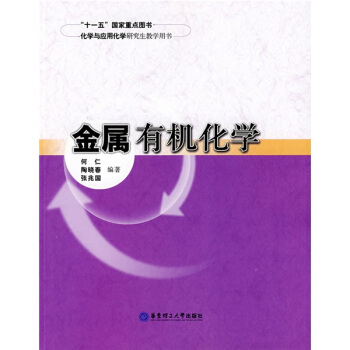
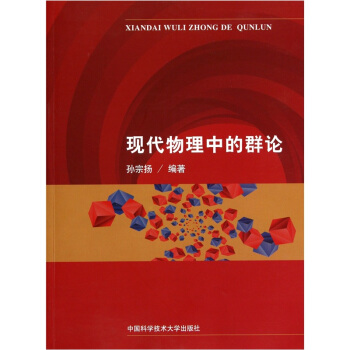
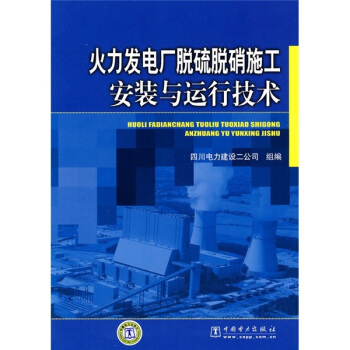
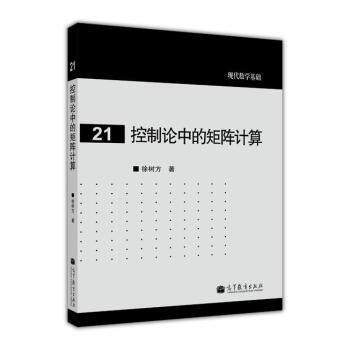
![量子场论(第2版) [Quantum field Theory Second Edition] pdf epub mobi 电子书 下载](https://pic.tinynews.org/10758693/rBEGEE-wtNsIAAAAAAAlYd1wj3cAAA7dAEwJ6AAACV5953.jpg)
![椭圆曲线 [Elliptic Curves] pdf epub mobi 电子书 下载](https://pic.tinynews.org/10825688/746c89d8-e344-44c4-9e95-826057ac43e6.jpg)
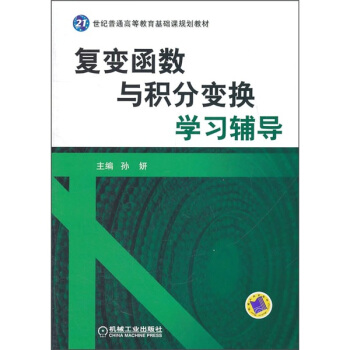
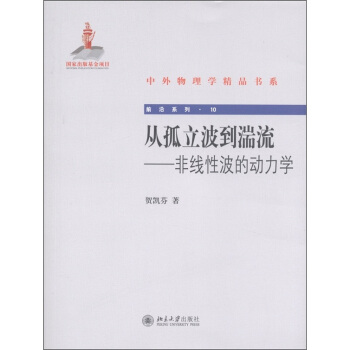
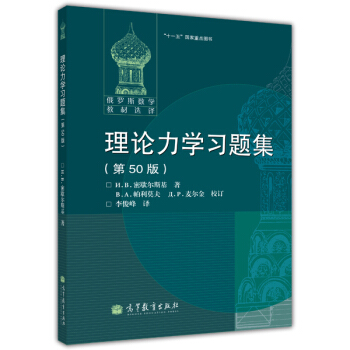
![动力系统引论 [Introduction to Dynamical Systems] pdf epub mobi 电子书 下载](https://pic.tinynews.org/11309190/563c1a9bN92aa181b.jpg)
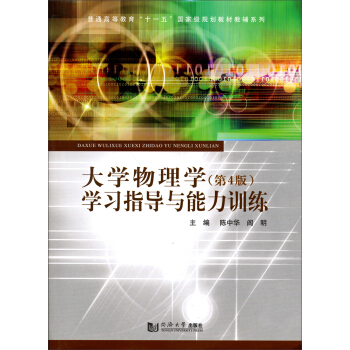
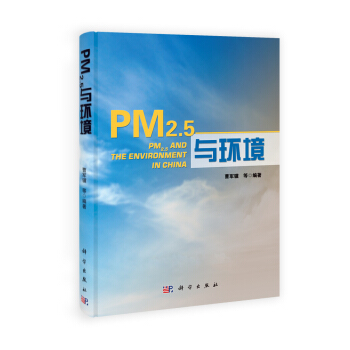
![理论力学自主学习辅导(配套高教·哈工大《理论力学1》 第七版 )/普通高等教育“十二五”规划建设教材 [Assistant to Self-Motivated Learning Theoretical Mechanics] pdf epub mobi 电子书 下载](https://pic.tinynews.org/11620786/54dddbc4N5790ad4d.jpg)
![黎曼几何和几何分析(第6版) [Riemannian Geometry and Geometric Analysis Sixth Edition] pdf epub mobi 电子书 下载](https://pic.tinynews.org/11647751/54e1b516N236b44c7.jpg)
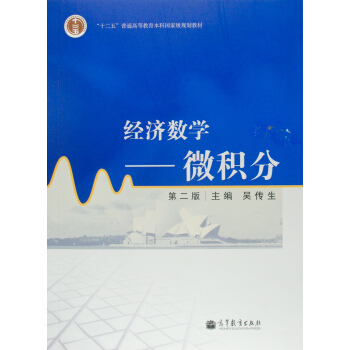
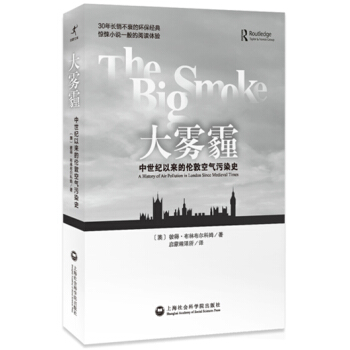
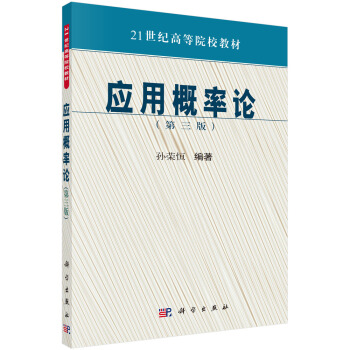
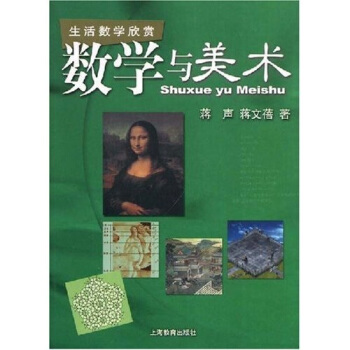
![经典英文物理教材系列:宇宙学的物理基础 [Physical Foundations of COSMOLOGY] pdf epub mobi 电子书 下载](https://pic.tinynews.org/10096503/d120df60-0ce4-449c-8c3c-98573d0e0c1a.jpg)
